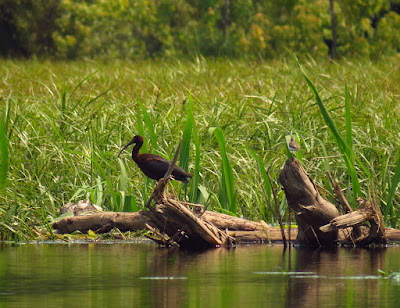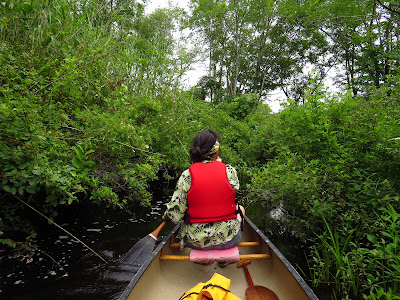I put in at the marsh with near perfect timing. I just needed a head clearing trip, a short loop around the nearest marsh was the idea. It was windy and the tide was low but coming in, so I started at the rougher wildlife refuge launch. As I said, my timing was spot on and I avoided an ankle deep mud slog by about 15 minutes and instead just stepped into the canoe with nothing more than ordinary wet feet.
There is a pretty good wind, maybe 15 mph steady, but with the low tide there is plenty of tall spartina to hide behind. I head around clockwise.
Within the first quarter mile I have spotted two dozen Night Herons. Most of them are newly fledged juveniles, a mix of Black Crowned and Yellow Crowned. To tell the juveniles apart one has to focus on details a bit more than I care to. The adults are easy. There are several Great Blue Herons, Great Egrets, Snowy Egrets, one Oyster Catcher and a ton of small Sandpipers. I imagine that most of the Egrets are dispersed throughout the marsh. The Night Herons seem to be congregating in one corner and I suppose it is a defensive tactic for the young birds.
 |
| Juvenile Yellow-Crowned Night heron |
I find six Osprey close together at the tip of Milford Point. They are all adults and with the tide coming in fast they are all probably taking advantage the resulting good fishing.
I head downwind and with the current through Nell's channel. The upstream Osprey nest has two young birds perched there with the parental units nearby. At his point in the fledglings development, they are nearly identical to adults, except that they can't fly. Once they start flying you can still identify the young for about two weeks as they don't fully spread their wings and they tend to goof off.
By the time I'm back to my start point, I've totaled three dozen Night Herons and add a last minute immature Bald Eagle.




































